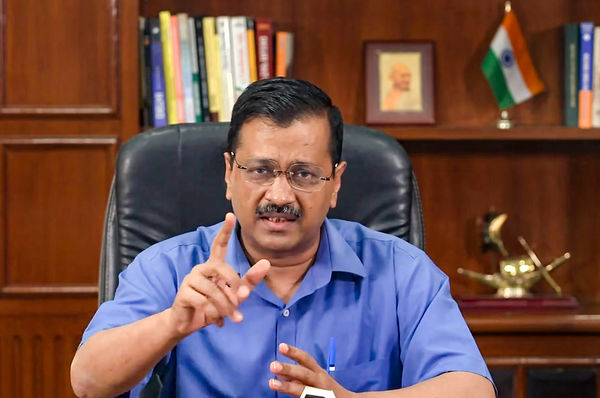Due to the rising COVID cases in Delhi, Chief Minister Arvind Kejriwal issued a Yellow alert. This is part of the Graded Response Action Plan (GRAP) that the city has in place to deal with such situations.
Divided into yellow, amber, orange, and red, the plan takes certain parameters into consideration. The cumulative active cases, rate of positivity, and oxygen bed occupancy are prime factors.
With the omicron variant making its presence felt in India, here’s a detailed look into Delhi’s colour-coded alert system.
Yellow
The issuance hinges on the positivity rate being over 0.5% consecutively for two days, cumulative active cases touching 1,500 in a week, or average oxygen bed occupancy in hospitals being 500 for the same amount of time.
What’s restricted
Shops in malls and markets can function in odd-even capacity from 10 AM to 8 PM. One weekly municipal market to operate with 50% vendor capacity. Restaurants to remain open from 8 AM to 10 PM, and bars from 12 to 10 PM. Both will run at 50% capacity. Cinemas, auditoriums, banquet halls, gyms, spas, yoga centres, and entertainment parks remain closed. Sports complexes, entertainment parks, and stadiums – except during national and international events – are to stay closed too.
Also Read | COVID vaccine for children: All you need to know
Delhi buses and metro operate at 50% capacity, government offices can call 100% Grade I officers, while private organizations can have 50% of their staff working from 9 AM to 5 PM.
Entertainment/religious/social/political/festival-related gatherings are completely banned. Marriages and funerals can have 20 people, but banquet halls cannot host weddings. A night curfew is in effect from 10 PM to 5 AM.
What’s allowed
Public parks and gardens can stay open. Construction activities, as well as industrial establishments, are allowed to continue along with e-commerce, saloons, barbershops and beauty parlours.
Amber
The second stage kicks in if active cases become 3,500 in a week, the positivity rate is over 1% for two days in a row, or oxygen bed occupancy rests at 700 for a week.
What’s restricted
The restrictions in place for Yellow continue, but are joined by new rules. Restaurants and bars to close, but deliveries and takeaways can continue. Shop operation timings in malls and markets will be from 10 AM to 6 PM.
Also Read | India’s indigenous Corbevax Coronavirus Vaccine: All you need to know
Metros will run at 33% capacity and buses have to stick to 50. Gardens, public parks, barbershops, beauty parlours will close. Weddings and funerals will still be capped at 20 attendees. Weekend curfews will be in place, restricting movement between 10 PM Friday to 5 AM on Monday.
What’s allowed
E-commerce, construction activities, and manufacturing units can function without hindrance.
Orange
These take effect if the positivity rates are over 2% for two days, or the cases jump to 9,000 in a week. Also, if the average occupancy of oxygen beds is 1,000 for a week, the city will issue this alert.
What’s restricted
Delhi Metro will close. Buses can operate at 50% but only carry people engaged in essential activities.
Only essential shops, milk booths, and medicine stores will remain open. Construction activities will come to a halt unless workers stay on-site. Factories can only function if workers stay there, and manufacture essential commodities. E-commerce will cease except for delivering essentials like medicines.
Also Read | Complete list of COVID vaccines and treatments approved in India
Night curfews and those on weekends will remain in place. Wedding and funeral attendees will be lowered to 15. Government offices can remain open, but private ones will have to shut down. Those falling under the exempted category can operate from their offices.
Red
The highest level of alert is reserved if the positivity rate goes to 5% for two days, and the cumulative new case touches 16,000 in a week. It also comes into effect if the average oxygen bed occupancy is at 3,000 or more for a week.
What’s restricted
The lockdown measures from the Orange alert will carry over, but the situation will be more actively monitored when it comes to the movement of people and vehicles in public. This is because of the total curfew that’ll be in place.







